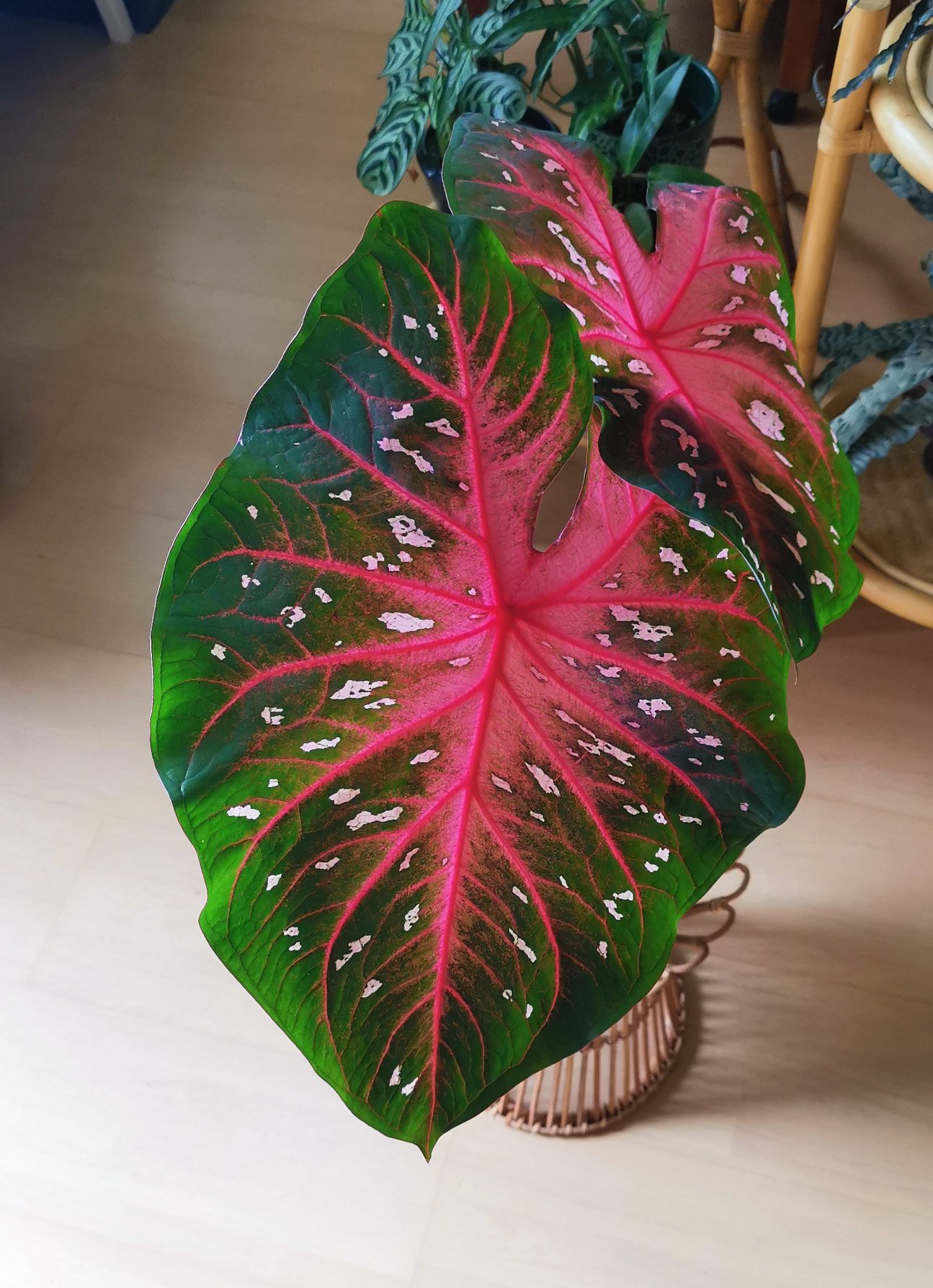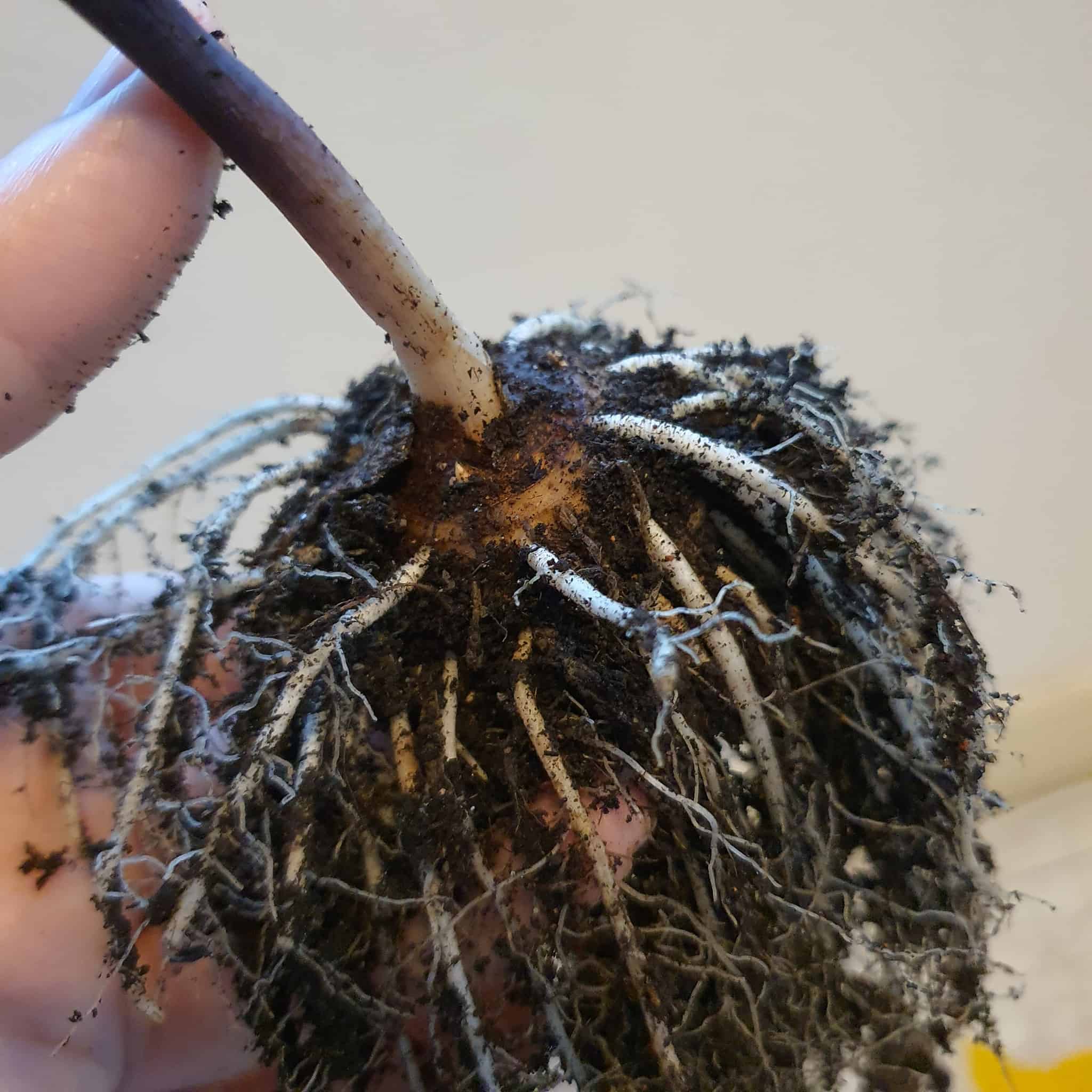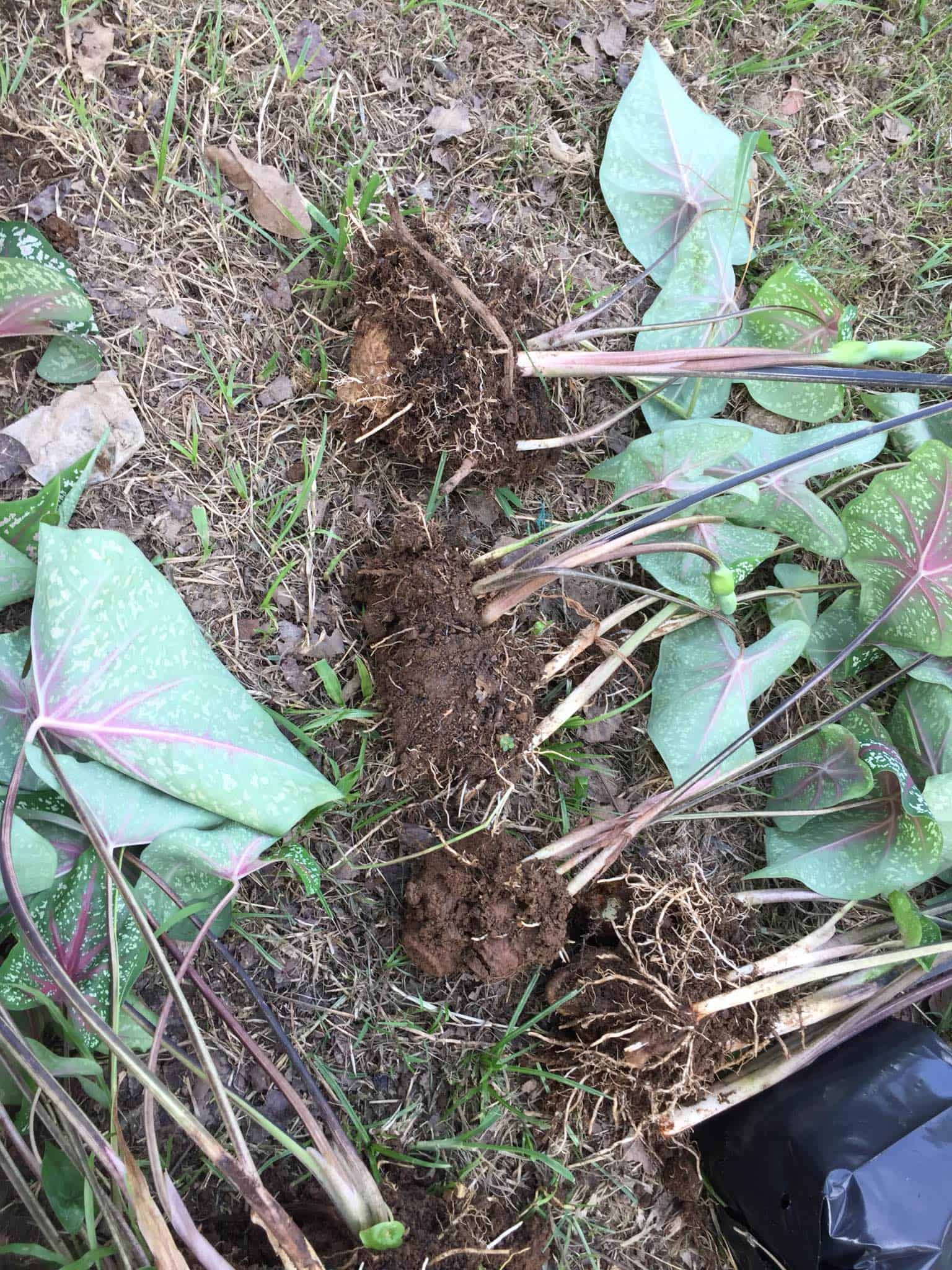Caladium Red Flash is a fancy tropical houseplant kept for its vibrant and ‘elephant ear’ leaves that can flourish with correct growth care in spring and summer!
Leaves of Caladium Red Flash have bright reddish-pink centers, but without care concerns, the leaves lose their tinge, giving a dull look.
So, let’s learn about the methods for safekeeping Caladiums and hoard the aesthetics of its foliage!
Table of Contents Show
Overview of Caladium Red Flash
Caladium Red Flash is a tropical plant hailing from the aroid family, Araceae.
The plant has colorful, eye-catching leaves with a bright red center blotched with pink dots on a green leafy backdrop.

Although people expect to notice the leaves of Caladiums at the first site, the plant is well-decorated with some other interesting features.
| Characteristics | Features |
|---|---|
| Common Name | Angel Wings "Red Flash" and Elephant Ear "Red Flash" |
| Scientific Name | Caladium tricolor "Red Flash" |
| Family | Araceae |
| Status and Ecology | Life Cycle: Evergreen Perennial Habit: Tuberous Clumping Herb Habitat: Tropical Rainforests Native Range: Brazil USDA Zones: 9 to 11 |
| Growth Rate | Slow to Moderate |
| Plant Size (Height and Width) | 12 inches to 24 inches × 24 inches |
| Growing Season | Spring and Summer (March to August) |
| Leaf | Shape: Heart to Arrow Head-Shaped with Wavy Edges Size: About 12 inches Long and 8 inches Wide Color: Bright Red Center with Freckles of Pink Dots on a Green Layover Texture: Glossy Smooth |
| Flowering Season | Early Spring to Late Fall (March to November) |
| Flower | Inflorescence: Spathe and Spadix Color: Whitish-Green Spathe and Creamy White Spadix Shape: Leafy Spathe with Pointed Tips and Cylindrical Spadix |
| Grown For | Ornamental and Variegated Leaves |
| Toxicity | Poisonous to Humans and Pets |
| Specialty | Bright red color at the center of the green leaf mottled with pink dots |
Caladium Red Flash: Ultimate Care Tricks
Caladium Red Flash is a tropical aroid that thrives naturally in moist, humid, and hot environments with shimmering sunshine.
So, it’s necessary to duplicate the basic requirements of a tropical forest for Caladiums.
1. Light and Temperature
Caladium Red Flash grows under the canopy of other tall trees and receives dappling sunlight throughout the day from the shade of tall trees.
They can face sunburns on the leaves if afternoon sunlight falls on the plant for a long time due to surging temperature.
To overcome this, locate the plant near an east-facing window in spring and summer or when the seasonal temperature escalates.
You can also use curtains to shield the plant from the direct blazing sun.
Low light can fade the leaf colors, and the leaves lose the colorful patterns.
Less sunlight invokes the temperature to drop, leading to the drooping and falling of leaves.
So, keep Caladium Red Flash away from radiators, coolers, or north-facing windows that promote the entry of cold drafts.
If you have an outdoor Caladium plant, cover it with frost blankets in winter to protect the leaves from frost damage.
Caladium Red Flash cannot survive temperatures below 50°F!
2. Watering and Humidity
Caladium Red Flash needs evenly moist soil to keep root rots at bay with high surrounding humidity.
As this is a seasonal plant, check the dry soil before watering in the fall and winter.
Overwatering may suffocate the plant around the root zone and cause black, pulpy, and soft roots. The leaves may also turn limp, lose their colors, and become droopy.
Contrarily, underwatering causes the leaves to become yellow, dry, brown, and crisp.
Although Caladium can tolerate a bit of high humidity, too much moisture in the air conjures bacterial and fungal spots to the leaves and stems.

Feeble humidity can stunt the growth of the leaves, and they cannot furl at maturity.
If humidity levels are low, placing the plant in a well-lit bathroom or kitchen can protect the leaves from moisture changes.
Misting the leaves in summer mornings can also help cool the plant from heat spells and offer ideal humidity.
3. Soil and Fertilizer
Yellowing or formation of purple streaks on the leaves and fewer blooms are some symptoms of nutrient deficiency in Caladium Red Flash.
Applying fertilizer in fall and winter can cause the fertilizer salts to accumulate on the topsoil leading to brown leaf tips.
Without well-percolating soil, the plant gets waterlogged, while dry soil may dehydrate the plant quickly.
To remove the fertilizer salts, run the potted Caladiums under weak tap water 4-5 times and drain the excess water from the drill holes.
You can also prepare homemade potting soil for Caladiums by blending coco humus, airy perlite, and peat moss in a 3:1:1 ratio.
But homemade soil may lack acidity. You can try adding some compost to adjust the acidity in the soil or rely on these commercial potting mixes and fertilizers.
4. Potting and Repotting
Caladium Red Flash is perennial, but its leaves die in fall and winter.
The tubers are present underground that can be dug and replanted in early spring when the ground is warm.
This is the best way to repot the plant and grow more in the warmer months.
But, if the roots peek from the drainage holes, water from the soil drains faster than normal, or the plant loses its leaves by turning yellow, may indicate that it needs a larger room to grow.
To repot, remove the plant from the old pot by freeing its roots from the root ball. Add some fresh soil to the new planter.
Place the Caladium plant in the new pot and fill the soil up to an inch below the brim.
Lightly moist the soil and offer the plant a dappling morning sunlight for 2 to 4 hours.
5. Frequent Pruning
Caladium Red Flash has thin, delicate, soft leaves that are easily damaged by pests and diseases.
Caladiums are generally pest and disease hardy, but sometimes caterpillars, aphids, snails, slugs, mealybugs, thrips, and white flies can bother their leaves.
If you see rugged margins, yellow or brown patches on the surface, or notice any bugs on the leaves, use neem oil spray or BT control to deter them manually.
Caladiums grow from tubers, so most fungal pathogens attack the vulnerable tubers of the plant.
To protect the tubers, immerse them in hot water (122°F) for 30 minutes before planting or storing them dry over winter.
If the infections are severe, the pathogens can spread to the leaves, causing brown spots on the surface and around the lower stems.
To deter the pathogens, use Commercial fungicides and spray them directly on the site of infection after the symptoms are visible.
Caladium Red Flash: Summarized Care Tips
Take a quick revision to learn briefly about the care tricks of Caladium Red Flash.

Caladium Red Flash: All About Growth Rate
Caladium Red Flash is a slow-growing tropical evergreen perennial herb with large and colorful leaves that resemble the head of an arrow or almost look like the ears of an elephant.
The veins in the leaves are bright red, extensively covering a large part of the leaf surface. Pink-colored freckles are splattered over the green edges of the leaves.
A single leaf can grow about 12 to 18 inches long, supported by thin stems.
Caladium Red Flash grows actively in spring and summer and attains a mature height and spread of 12-36 inches and 24 inches, respectively.

The plant develops from tubers in early spring after dying back in winter and forms clumps of stems with leaves atop.
Additionally, the plant produces a flower from early spring to late fall, which goes unnoticed as it remains hidden behind the broad leaves.
However, flowering is rare and requires a dose of bloom-boosting fertilizer during summer.
Nevertheless, the flowers are an inflorescence with leafy, whitish-green spathe and cylindrical creamy-white spadix.
The spathe helps in the pollination process, while the spadix bears tiny bisexual flowers aiding in reproduction.
Toxic Traits of Caladium Red Flash
Caladium boasts bright, colorful leaves, but these colors are a concerning sign that may hint at its toxic nature.
Pets may experience symptoms like burning around the mouth, lips, nose, and eyes, hoarse barks or meows, and difficulties in breathing or swallowing.
In humans, contact with the sap can result in skin irritation and rashes.
To relieve the symptoms, use milk to wash the mouth parts of your pets. Never make them vomit the ingested plant parts, as it may lead to backfire symptoms.
Immediately take your pets to a vet or report an emergency to the following hotline numbers.
- Animal Poison Control Center (APCC): (888) 426-4435
- Pet Poison Helpline: (855) 764-7661
Propagating Caladium Red Flash
Stems, seeds, and tubers are the parts that you can use to propagate Caladium Red Flash in early spring when the potting soil is warm.
But tubers are readily available, and you can dig them out in winter. And place them in the soil in spring, where they grow new stems.
1. Propagation Via Stem Divisions
Stem divisions can be propagated in soil or rooted in water first and planted in the soil later.
First, uproot a healthy plant and separate the divisions by hand.

Each stem division must contain 2-3 leaves and a base with few healthy roots.
- Trim the roots back to a half-inch in length.
- Place the divisions in a glass jar with rooting hormone solution.
- Set the humidifier to 50%-80% and place the divisions near an east-facing window after covering them with a large zip-lock bag.
- Stem divisions may take 3 to 6 weeks to develop new roots.
- Transfer the divisions to a fresh potting mix about 4 inches deep and care accordingly.
2. Propagation via Tubers
Dig the tubers from the ground after the plant dies in winter.
- Separate the tubers into multiple sections. Each section must have an eye or growth point.
- Wait for the early spring when the ground warms to a temperature around 65°F.
- Make 4-6 inches deep holes in the soil or fresh potting mix, and place the tubers in the holes.
- Cover the tubers gently with some soil and water thoroughly.
Tubers may sprout new growth within 3-8 weeks, depending on the weather conditions.
Place one tuber per pot or keep at least a 9-12 inches distance between the tubers when planting in the ground!
3. Propagation via Seeds
You can also collect the seeds and sow them to germinate more Caladium seedlings.
- Take a seed tray and fill each section with a suitable potting mix with a pH between 6 and 7.
- Take seeds and sow them on the surface of the soil.
- Moist the soil with light water sprays and cover the tray with plastic wrap.
- Place the seeds in dappling sunlight for 6 hours daily.
- After 1-3 weeks, the seeds germinate and sprout new leaves within a few weeks after germination.
Once the seedlings beget a new set of true leaves, transfer them to a larger pot and care duly.
Watch the video below to learn about the methods of stem propagation for Caladiums!
FAQs About Caladium Red Flash
Can Caladium Red Flash stay alive all year round?
Caladium cannot survive winter because of its tropical nature. Outdoor Caladiums can sustain leaf damage from the cold and dry winter air.
However, if you live in zones 9-11, Caladiums can survive over winter with minimal frost protection.
How long does Caladium Red Flash last?
Caladium grows from spring to summer and starts dying from fall. It takes around 5 months of rest over winter and again begins to grow from the underground tubers in spring.
Can you leave Caladium Red Flash tubers in the ground in winter?
Yes, you can leave the Caladium Red Flash tubers on the ground during winter.
Wait for the soil to completely dry and make it well-draining, after which you can cover the tubers with some mulch on the topsoil.
Like Caladiums, Dahlia and Daffodils can grow from underground bulbs or tubers. So, they are great plants for early spring gardening!
Wrapping Up
Caladium red flash has fiery leaves to set your garden ablaze with elegance. But the plant, along with the leaves, is notoriously toxic.
So, use protection while offering care and keep your pets and children away from the plant. Be wary while repotting and pruning!


